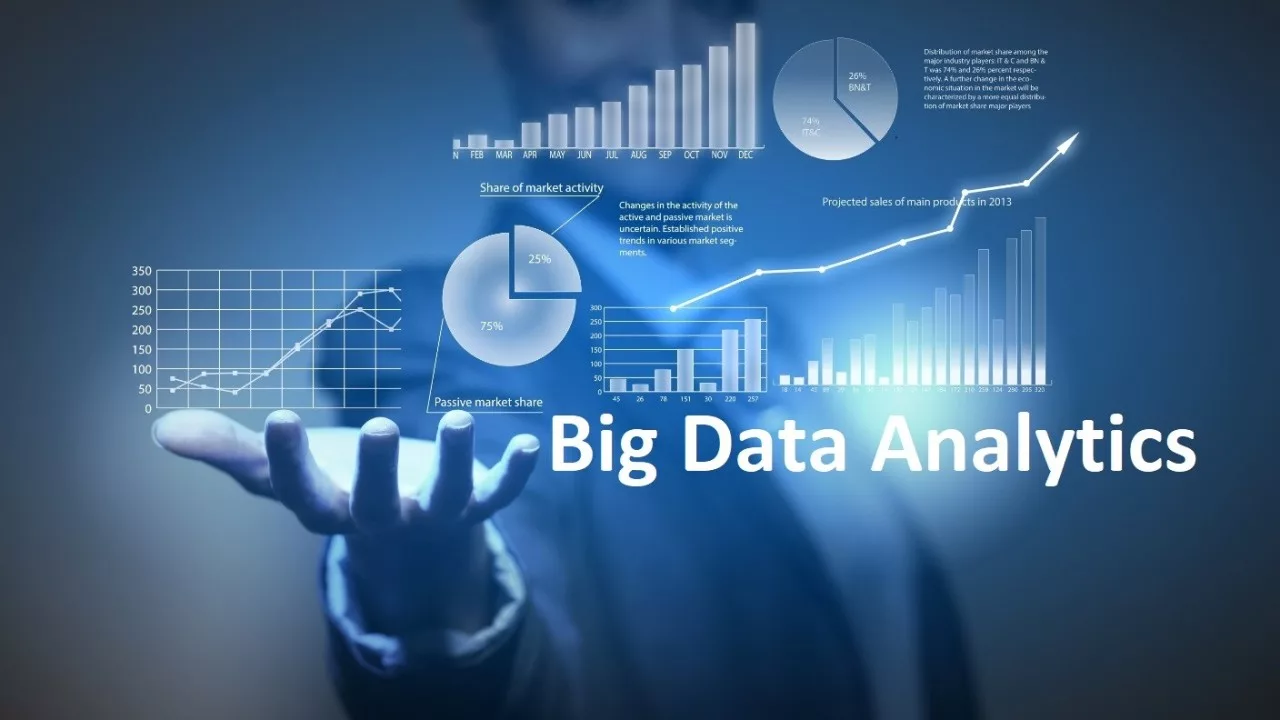The Role of Big Data and Analytics in Business
In today’s digital world, businesses are full of data that come from various sources like social media interactions, operational processes and customer transactions. Generally, named Big Data, this pile of data contains enormous potential for businesses wanting to use their power. Analytics provides methodologies and tools to interpret and analyse huge data and to attain meaningful insights from them, serving as a key factor to emerge this potential.
Insights obtained from Big Data analytics increase the operational efficiency of businesses. Companies analyse interior processes, determine bottlenecks, regulate workflows and optimise allocation of sources. In addition to increasing the overall efficiency, this innovative strategy helps save costs and maximise resources.
Consequently, the relationship between big data and analytics converts how businesses work. Insights obtained from big data analytics like optimising internal processes, understanding customer preferences and reducing risks have become priceless assets when it comes to decision-making. As technology advances, businesses that use and adopt the strength of big data and analytics are ready to be successful in this data-focused world.
What is Big Data?

In large-scale, quickly growing, and diversified data sets are referred to as big data. This situation also expresses 3 V which are Velocity, Variety and Volume. Big data essentially implies larger, more complex data clusters, particularly those generated by different data sources. Because of their volume, these data clusters are too big for conventional data processing to manage. However, this volume of data can be used to solve business problems that you could not get over before.
What are The Three V’s?
The first one is volume. Volume is a serious amount of data. Analysing large amounts of unorganised information at minimal densities is required. Twitter data flows, overlooked data, or website clicks could all be included under this classification. It might be, for example, application software or equipment having sensor. Tens of gigabytes of data might be involved for some organisations. It might be numerous petabytes for other institutions.
Velocity comes in second. Velocity is the ratio at which data is imported and can be abided by. Normally, the highest velocity of data flows, when compared to writing disc, directly transferred to memory. Some smart devices connected to internet are controlled in real-time or almost real-time. And, these smart devices necessitate real-time action and assessment.
The third one is variety. The numerous different kinds of data that are existing are pointed as variety. Typical kinds of data are nicely organised and easily managed within relational databases. Big data is growing, and as a result, data is now shown in fragmented types of data. Data kinds like video, text, or sound that are semi-structured or structured necessitate preprocessing the additional data to support metadata and making inferences from these data.
What is The Process of Working With Big Data?
Big data adds new ideas that pave the way for new business models and unique opportunities. There are three basic steps to start using it:
Integration is the first one. Big data unites datas that come from application program and many other resources. Extract, transform and load (ETL) meaning mechanism of traditional data integration, usually cannot officiate this task. New technologies and tactics are essential in order to analyse big data clusters terabyte and even petabyte scaled. Gathering, processing, and ensuring that the data has been organised and presented in a way that the company’s analysts can use are all necessary steps in the integration procedure.
Management is the second one Big data has to be stored. Both on-site and cloud storage are options for your storage needs. You can upload you data in which format you want to store and move required processing engines and any kind of processing requirements these datasets on demand. A lot of individuals rely their storage solution selection on the location of their data. Due to its ability to set the resources on demand and satisfy your present computing expectations, the cloud is gaining in popularity.
Analysis is the third one. Investing in big data amortise if you use it for analysis and decision-making. Visual assessments of your different datasets enables you to see your data in a way that has never been accessible before. You should examine your data deeper for new discoveries. And sharing your findings is better. Moreover, you should constitute data patterns with artificial intelligence and machine learning. And, you should use your data in your studies.
What is Data Analytics?
Data analytics is gathering data, their storage, categorising them and analysing those data in its most basic definition. This discipline focuses on acquiring insight by using these techniques. Implementing statistical techniques and analyses to data in order to solve problems and find trends is the major aim of data analytics. The significance of data analytics is growing as a means of analysing and improving business processes.
Data analytics draws on a range of disciplines including computer programming, mathematics and statistics to perform analysis of data. A series of techniques like data cleaning, data modeling, data transforming and data mining are used by data analytics teams.
In general, there are four categories of data analytics: prescriptive analytics assesses the probability that something will happen in the future; diagnostic analytics evaluates why something happened; descriptive analytics attempts to determine what happened at a specific moment in time; and predictive analytics suggests courses of action to take in order to reach the intended result.
What are The Kinds of Data Analytics?

Certain questions are asked in data analytics in order to reach the demanded result and analyse the information. Data analytics separate different methods and diversify as a result of these questions. The many kinds of data analytics may be evaluated under the following four topics. As mentioned above, these are descriptive analytics, diagnostic analytics, prescriptive analytics, and predictive analytics.
The question “What happened?” is asked and answered in descriptive analysis. In order to offer insightful analysis of past events, descriptive analytics collects basic information from several data sources. But, it is indicated that these findings show that something is right or wrong without explaining the reason.
Data experts advise against highly data-driven corporations depending mainly on descriptive analytics because of this. They recommend combining descriptive analytics with other types of data analytics. It is advised by data consultants that combining descriptive analytics with other sorts of data analytics. With predictive analytics, you may start integrating the findings from your diagnostic and descriptive studies into ideas that can be used to make decisions through creating predictions about “potential future outcomes.
” In predictive analytics, quantitative analysis of data cluster is used by data analyst and results that are usually called as predictive-modeling are obtained. With this more comprehensive method, predictions are to be characterised and model validity is to be evaluated. Predictive analytics involve some parts such as regression models, classification methods, and machine learning strategies.
The process of examination of data in order to understand the event, reason or why it is happened is called diagnostic analytics. Approaches including correlations, mining data, drill-down, and exploration are commonly utilised. “Why did it happen?” is the primary concern addressed in this kind of data. Analytical diagnostics assists in providing a reason for an event.
Besides drill-down and enquiry, it results in warnings and exploration. In order to attain more detail from a report, enquiry and elaboration are used. A possible issue is reported through alerts and discovery before it happens. As an example, diagnostic analytics can be used the most proper candidate and “discover” the data of this candidate for a new position in your business.
By assisting in the determination of suggested activities based on imagined prospective outcomes, prescriptive analytics advances upon predictive analytics. Helping organizations to reach their business goals is prescriptive analytics’ duty. Models of prescriptive analytics constantly “learn” through feedback systems in order to propose the most convenient solution and to analyse continuously the relationship between event and action.
Before anything is done, the solution may be recreated so as to assess any significant performance criteria and make sure the result matches the planned metric plans. In order to get at the proper results in prescriptive analytics, the use of artificial intelligence, machine learning, organisational goals, institutional obstacles, and several additional elements frequently used as support.
See you in the next post,
Anil UZUN
